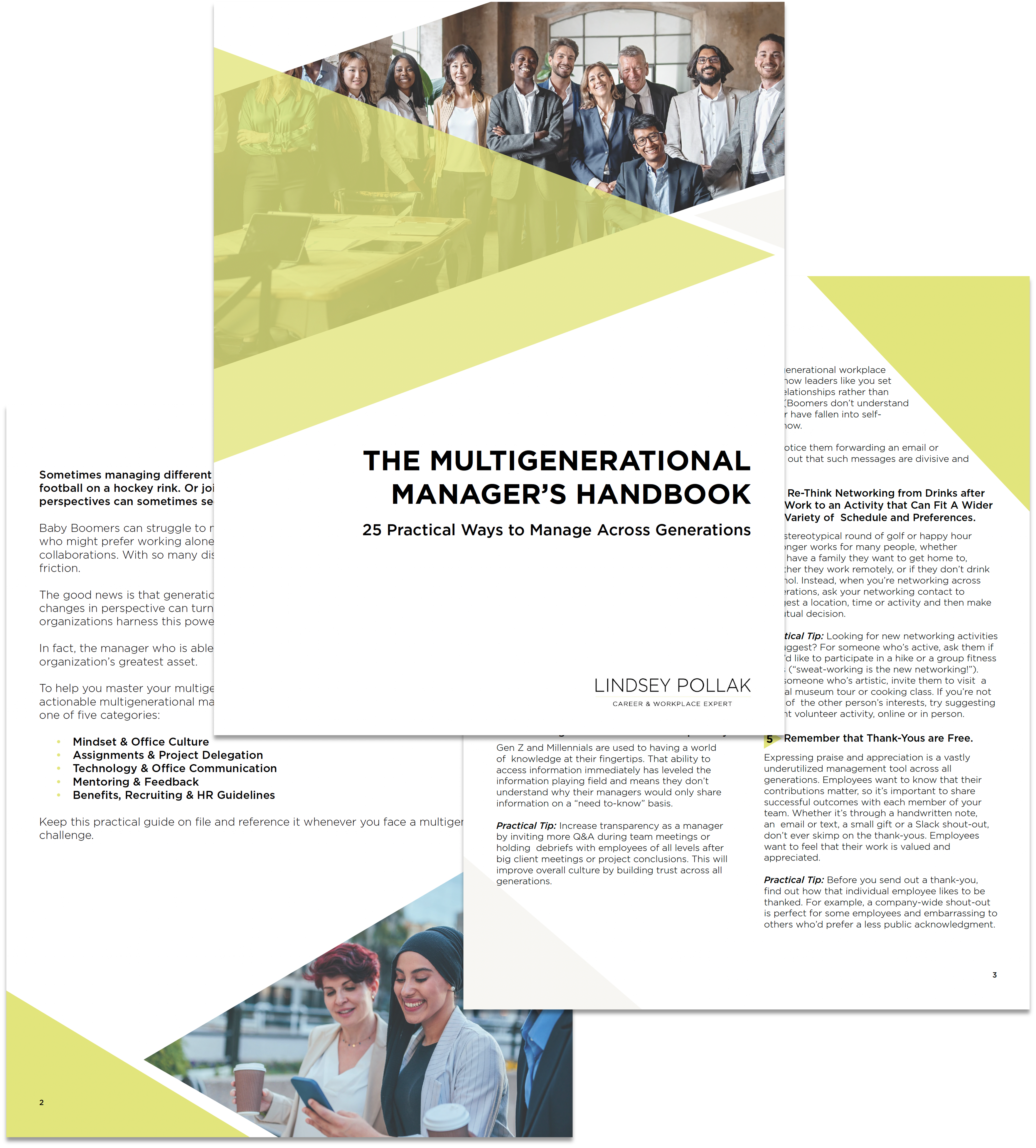“Young People Are Going To Save Us All From Office Life,” cheered the headline of a recent New York Times article that caught my eye. As the article explored, flexibility is often cited as the highest priority for newer professionals as they evaluate jobs. But I would argue that, in our current five-generation environment, workplace improvements should appeal to employees of all generations.
Wondering how you can make your workplace more adaptable? Here are four simple strategies that appeal to Traditionalists, Boomers, Gen Xers, Millennials and Gen Zs alike.
1. Offer schedule adaptability for better work/life integration.
This almost goes without saying, but I will say it again: The traditional 9-to-5 workday needs to be updated for the way people really work today—which is when and how they need to. Your new manager might leave at 4 p.m. to pick up his daughter from daycare, but you can be pretty sure that he’ll be catching up on client correspondence at 10 p.m.
Schedule flexibility is critical to attract and retain employees: Capital One’s 2019 Work Environment Survey reports that 81% of employees say it’s one of the top two reasons they stay with a company, up 8% from 2018.
Of course, flexibility doesn’t mean that your whole team decides to work when they feel like it. It’s perfectly all right to try modified approaches until you land on what works best for you and your clients. One strategy I like to recommend is to offer your employees just 5% more flexibility. What would that look like in your workplace? When you show you value output rather than work hours, your employees are going to be more loyal—and quite likely more productive. Remember that small tweaks can go a long way.
2. Create flexible workspaces.
The Capital One survey also identified a strong preference for adaptability in office environments, with nearly three-quarters of respondents saying it’s important for their company’s workplace design to be flexible. Sixty-five percent say they are more productive when they change their physical location while working; 73% say they have their best ideas when they’re able to use flexible workspace options; and the same amount agreed that they work better when they have access to flexible furniture arrangements, such as standing desks, which support their desire for wellness.
Adaptable, dynamic workplace design fits well with the way we work today—sometimes we need quiet spaces for focused, heads-down work, and other times, workers seek out collaborative spaces for brainstorming. According to the survey, 88% and 77% of employees, respectively, said having these options allowed them to perform at their best.
3. Offer flexible experiences for teams.
Adaptability applies not only to when and where we work, but how we work. I’ve long been a proponent of cross-training or offering rotational assignments, so people can try something new without feeling like they have to jump to another company. By encouraging your employees to work across projects, teams and departments, you can feed their craving for fresh challenges, while bolstering their skills and confidence.
Not sure how to offer flexible assignments? You can start small; for example, invite someone from accounting to sit in on a new client sales meeting. The customer will feel supported by your entire organization, and it gives both the finance and sales side insight into each other’s world.
4. Let employees adapt their benefits to what matters most to them.
Offering every employee a commuter pass has little value to your colleague who rides her bike to work; ditto free bagels for your associates following a keto diet.
Rather than presenting a standard slate of benefits, see where you can offer flexibility and customization. For example, you could apply your company match to an employee trying to whittle away student debt the same way you do for someone socking funds away for retirement. Or you could allocate $50 per person as a commuter benefit—which they could use to pay for parking, a train pass or a bike tune-up, depending on their particular needs. (On that note, commuting assistance was No. 4 on Capital One’s list of perks that help retain talent.)
Most workplaces eventually learn that one size often fits none, and prioritizing an adaptable work environment will appeal to workers of all generations.
How does your company offer flexibility? I’d love to hear your creative ideas below or on Twitter.
Disclosure: I am an official #CapitalOnePartner.

